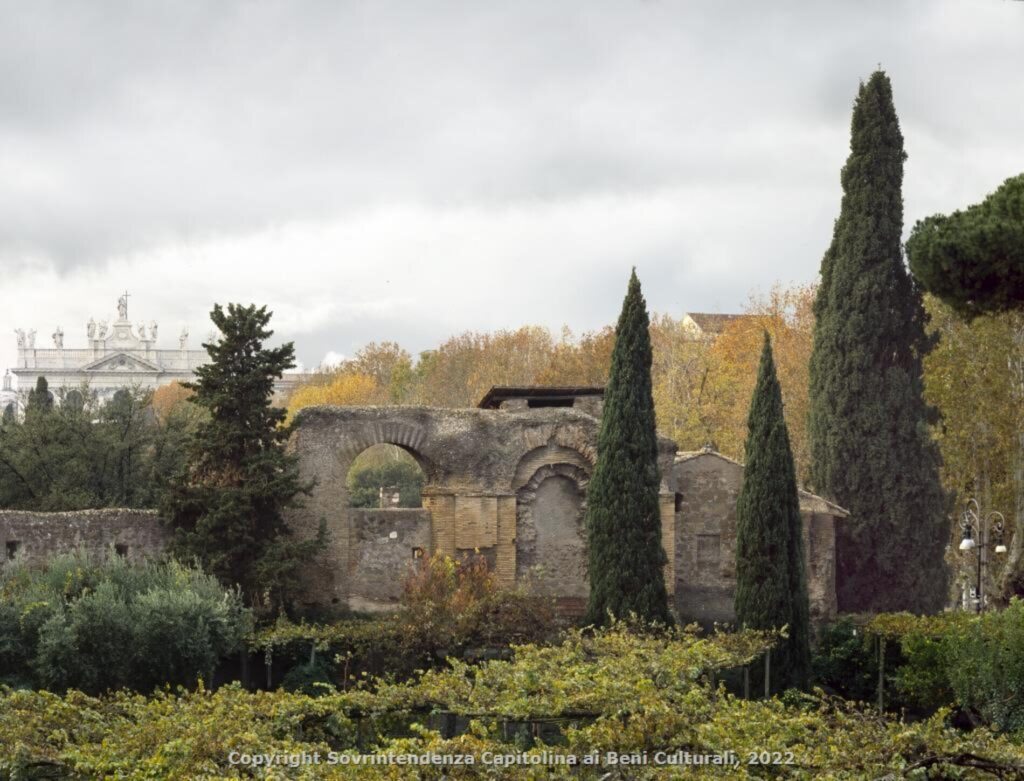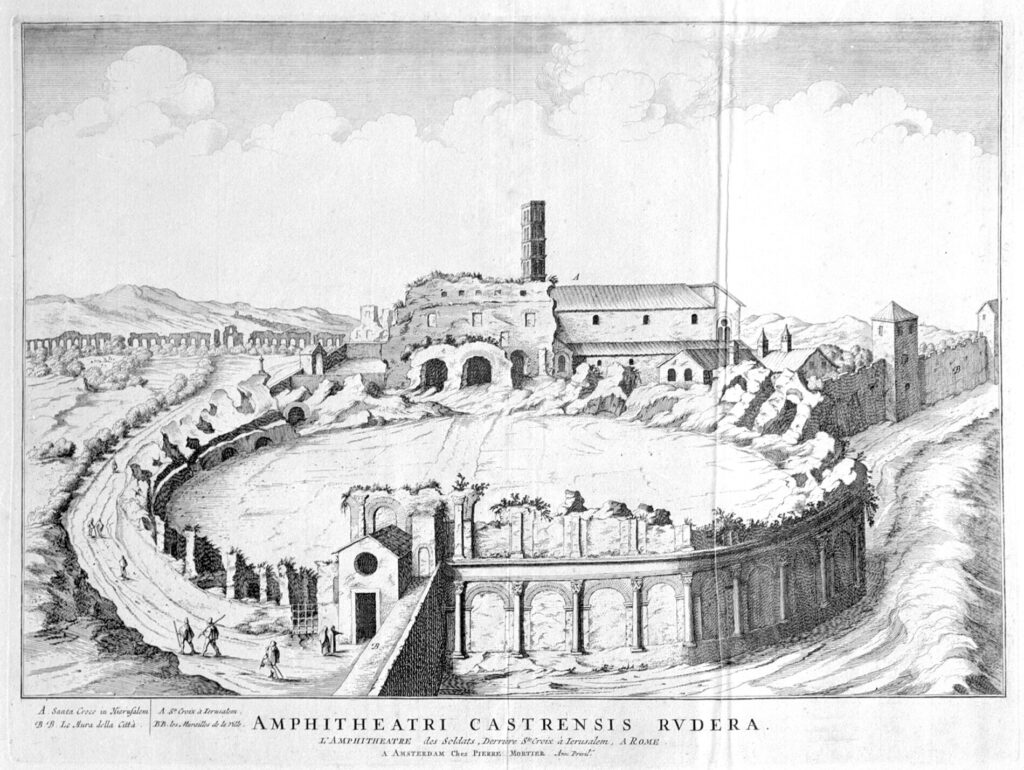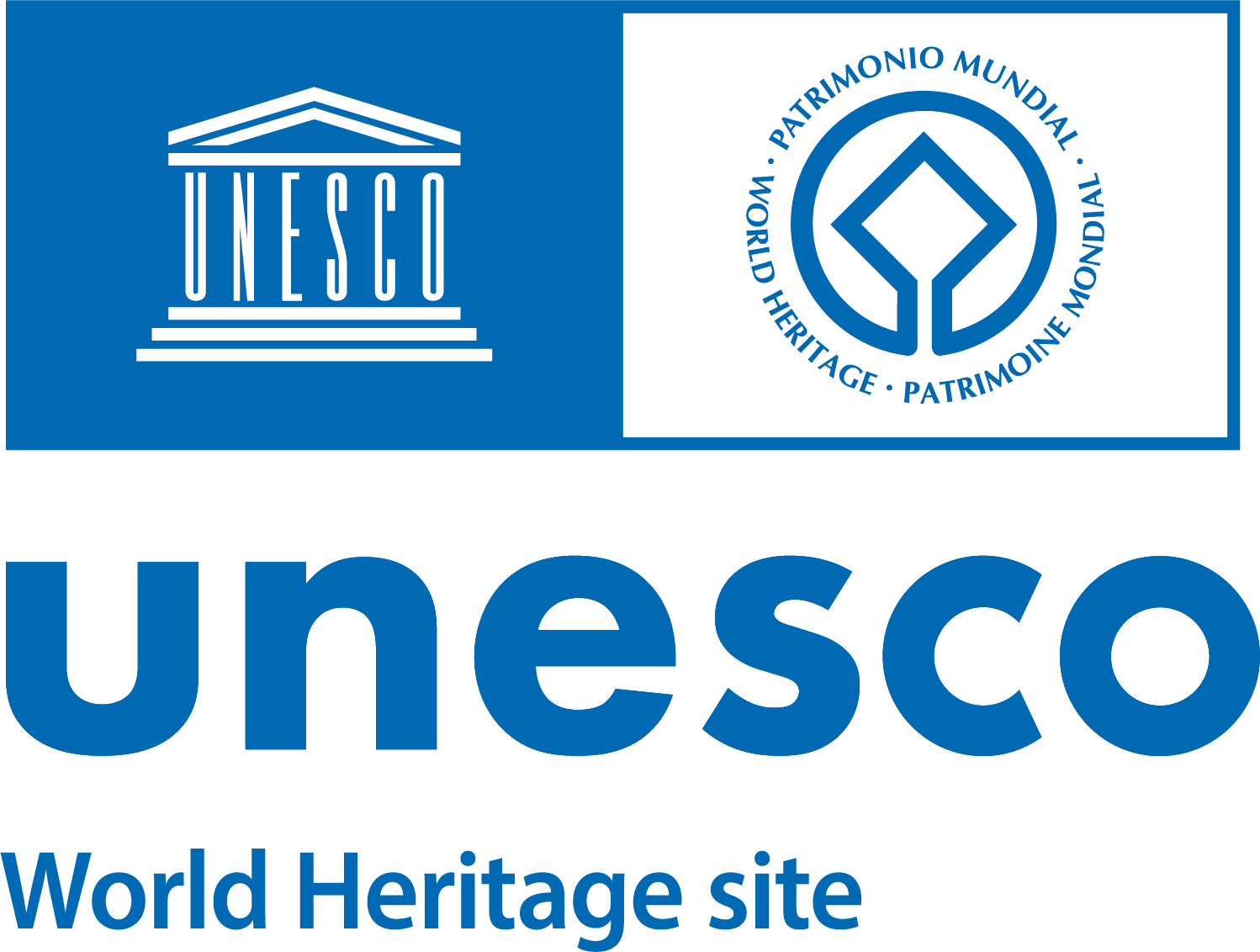Overlooking Piazza Santa Croce in Gerusalemme is a round structure. This is the Amphitheatrum Castrense, the monumental entertainment venue built by Elagabalus (118-222) on the imperial property of the Severans.
The amphitheatre hosted beast and gladiator games only for a few decades, because in 271, Aurelian incorporated the building into the city’s defensive circuit, closing off the access arches and fortifying the top floor. It then became a stronghold for the defence of the imperial palace where Helena, Constantine’s mother, resided. Its perimeter was repeatedly targeted during the invasions of the Goths and Vandals. As Procopius recounts, it seems that it was here that Vitiges, king of the Goths, breached the wall during the siege of Rome in 537, at the point where it seemed most impregnable. Between 1555 and 1556, for fear of new military threats, Pope Paul IV demolished the two upper floors of the amphitheatre, leaving the monument with the appearance it still has today. When Cardinal Carlo Borromeo took over the basilica from the Carthusian monks in 1561, the order of the Cistercians of Lombardy moved in. The space once occupied by the arena housed the convent’s vegetable garden and from 2004, a park. Today, the amphitheatre can be visited upon request. The entrance has been embellished with a door made of shards of coloured glass created by the artist Jannis Kounellis.


2. Mortierre P., remains of the Amphitheatrum Castrense, etching, 17th century


